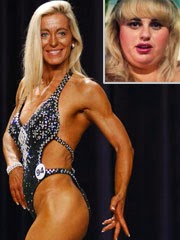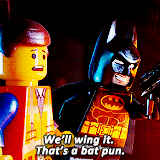Joseph Campbell was an American author and educator who specialized in examining mythology and religion for similarities across cultures. His life's work as an author came together in the form of his most lasting theory, that of a monomyth. In The Hero with a Thousand Faces (1949), Campbell argued that the structure of the hero's journey remained consistent throughout cultures, with only surface changes made to create the heroes that define a culture's mythology. Campbell was heavily influenced by Carl Jung, one of the most prominent psychologists of the 20th century, who developed a theory of collective unconsciousness. Jung's assertion that all of humankind shares certain archetypes heavily influenced Campbell's analysis of both mythological stories and more modern pieces of fiction. Harmon's story circles draw their cyclical structure and many of the narrative steps from Campbell's theory of the Hero's Journey:
Campbell's structure, however, goes into more detail than Harmon's. However, it should be noted that Harmon often cites steps such as the Crossing of the Threshold when talking about his writing. Campbell's basic steps on the Hero's Journey are as follows, broken roughly into three-act structure:
1. The Ordinary World
1. The Ordinary World
2. The Call to Adventure
3. Refusal of the Call
4. Meeting with the Mentor
5. Crossing of the Threshold
4. Meeting with the Mentor
5. Crossing of the Threshold
End of Act 1
6. Tests, Allies, and Enemies
7. Approach
8. The Ordeal
9. The Reward
End of Act 2
9. The Reward
End of Act 2
10. The Road Back
11. The Resurrection
12. Return with the Reward
End of Act 3
The division by act structure can be debated, and different sources often re-name the specific steps, but the basic structure of the Hero's Journey stays constant over much of fiction, regardless of genre or artistic medium. Campbell's theory originally was formulated as a way to discuss mythological texts like The Odyssey and Gilgamesh, but has come to influence some of the most prominent novels and films of the 21st century. Want an example?
My source for Campbell's steps was this website: http://www.thewritersjourney.com/hero's_journey.htm . If you're interested in Dan Harmon's story circles and would like to know more, I'd recommend checking out his tutorials on the Channel 101 wiki: http://channel101.wikia.com/wiki/Story_Structure_101:_Super_Basic_Shit.
11. The Resurrection
12. Return with the Reward
End of Act 3
The division by act structure can be debated, and different sources often re-name the specific steps, but the basic structure of the Hero's Journey stays constant over much of fiction, regardless of genre or artistic medium. Campbell's theory originally was formulated as a way to discuss mythological texts like The Odyssey and Gilgamesh, but has come to influence some of the most prominent novels and films of the 21st century. Want an example?
George Lucas and Mark Hamill on the set of Star Wars
George Lucas was one of the first filmmakers to take Campbell's theory and develop a feature film around it. It was Campbell's The Hero with a Thousand Faces that helped Lucas flesh out his basic ideas for his first big-budget film. Star Wars and the entire original trilogy owe their structure and storytelling beats to Joseph Campbell. Dan Harmon has since taken the same basic structure and applied it to over 90 episodes of Community, in addition to using the structure for projects such as Rick and Morty and Monster House. Studying Campbell's monomyth can help young storytellers master the basics of character development, pacing, and plot structure, regardless of medium.
My source for Campbell's steps was this website: http://www.thewritersjourney.com/hero's_journey.htm . If you're interested in Dan Harmon's story circles and would like to know more, I'd recommend checking out his tutorials on the Channel 101 wiki: http://channel101.wikia.com/wiki/Story_Structure_101:_Super_Basic_Shit.
























































